| Travel Photos Home Page |
Kowloon, 2019
|
||||
|
To return to the Paintings section of this website, please CLICK HERE
|
|||
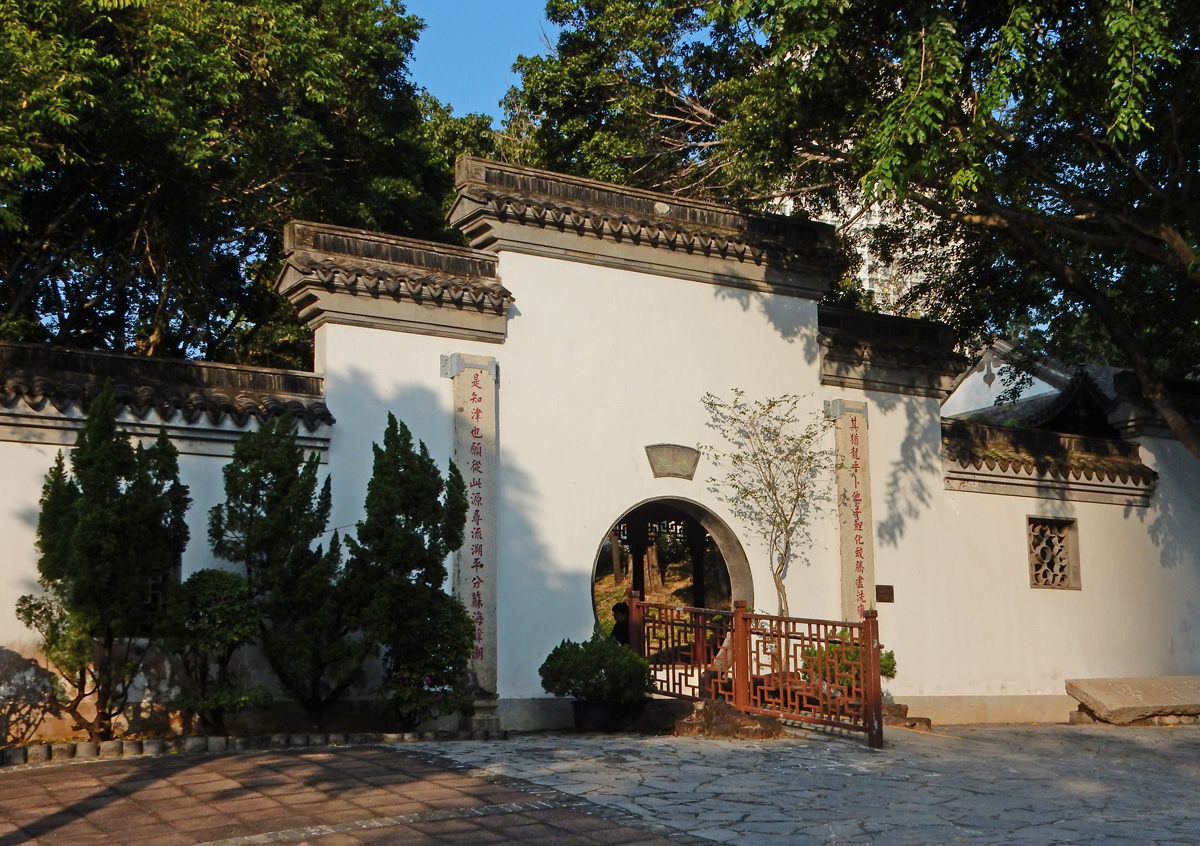 |
|||
| When I was a kid growing up in Hong Kong, there was a notorious place in Hong Kong, called the Kowloon Walled City. It was a place run by Triad gangsters and was reportedly full of opium dens and brothels. The local police tended to avoid too much scrutiny of this dangerous zone. | |||
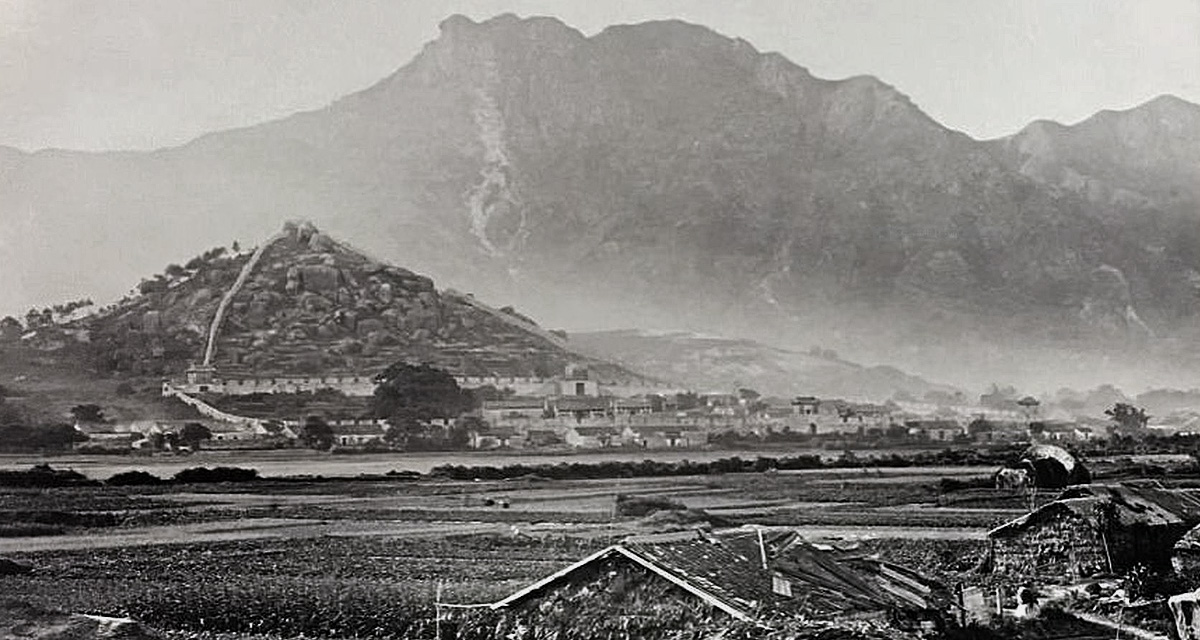 |
|||
| In this ancient photo, you can clearly see the silhouete of Lions Rock in the distance, and in the middle ground there is a rocky hill. There is a wall surrounding and protecting what was the old Kowloon Walled City.
Before 1897, that part of Kowloon was still Chinese territory, and the Kowloon Walled City was an old Chinese fort. After the Northern section of Kowloon was leased to Britain on a 99 year lease, the Kowloon Walled City remained as Chinese territory. |
|||
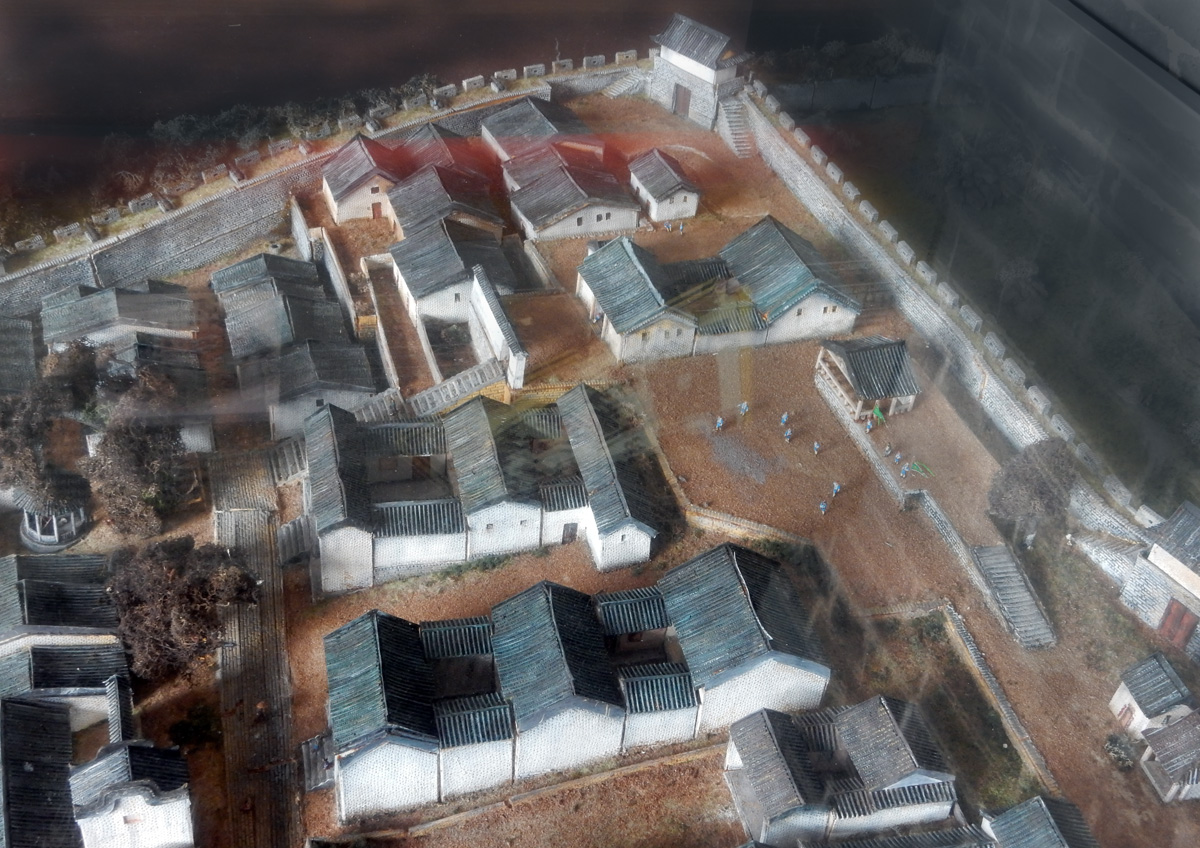 |
|||
| This is a model of what part of the old Walled City may have have looked like in ancient times, when it was a Chinese fort. | |||
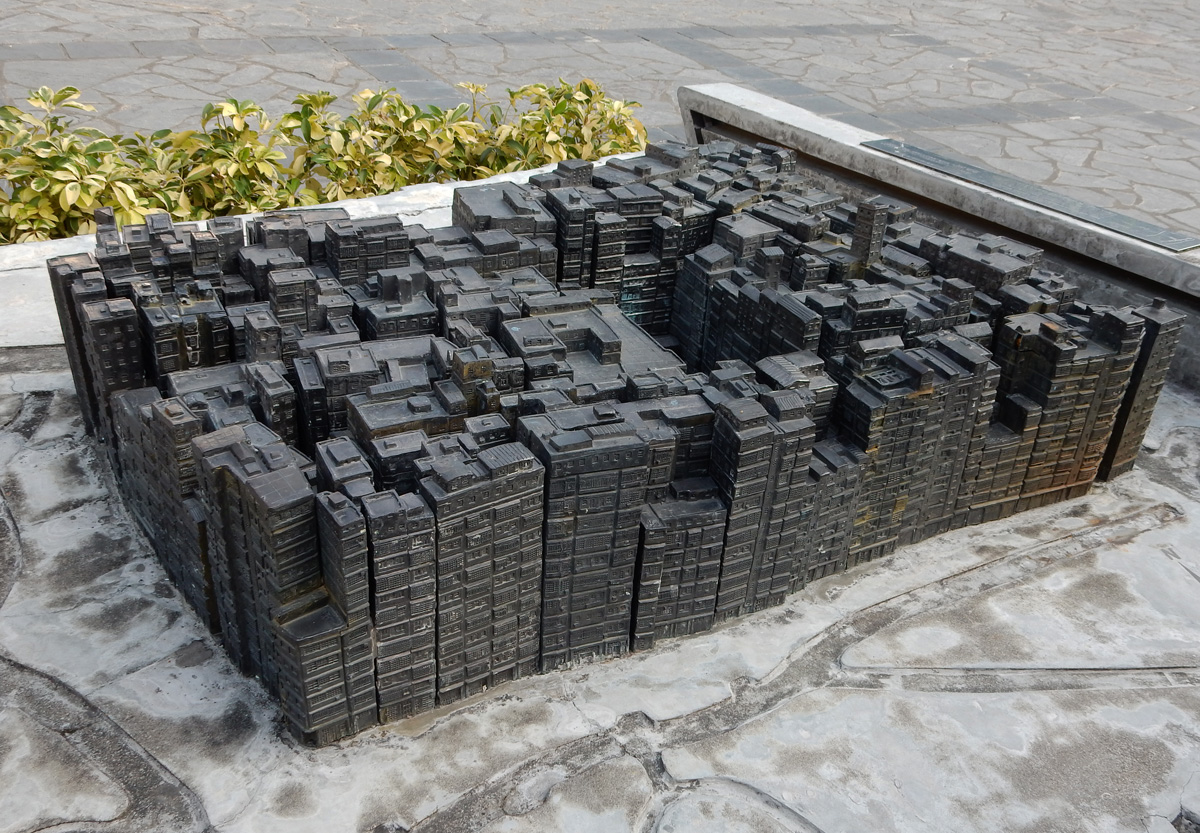 |
|||
| And THIS is a model of what the Kowloon Walled City came to look like post World War Two.
After World War Two, the Chinese Nationalist Government laid claim once more to this small piece of Kowloon, and, subsequently, neither the British nor the Chinese Govenment were able to police it effectively. It became a No Man's Land. The refugees moved in and squatted, and soon the Triads gained total control. It was reportedly the most densely packed neighborhood in the World. All the building construction was carried out "organically" and without any legal authority or overall planning. It was pure anarchy in action. Thanks to the Triads, it eventually became Crime Central, a place of mystery. It was also a location for two movies: "Bloodsport" in 1988, with Jean-Clause van Damme, and Johnny Mak's "Long Arm of the Law" in 1984. |
|||
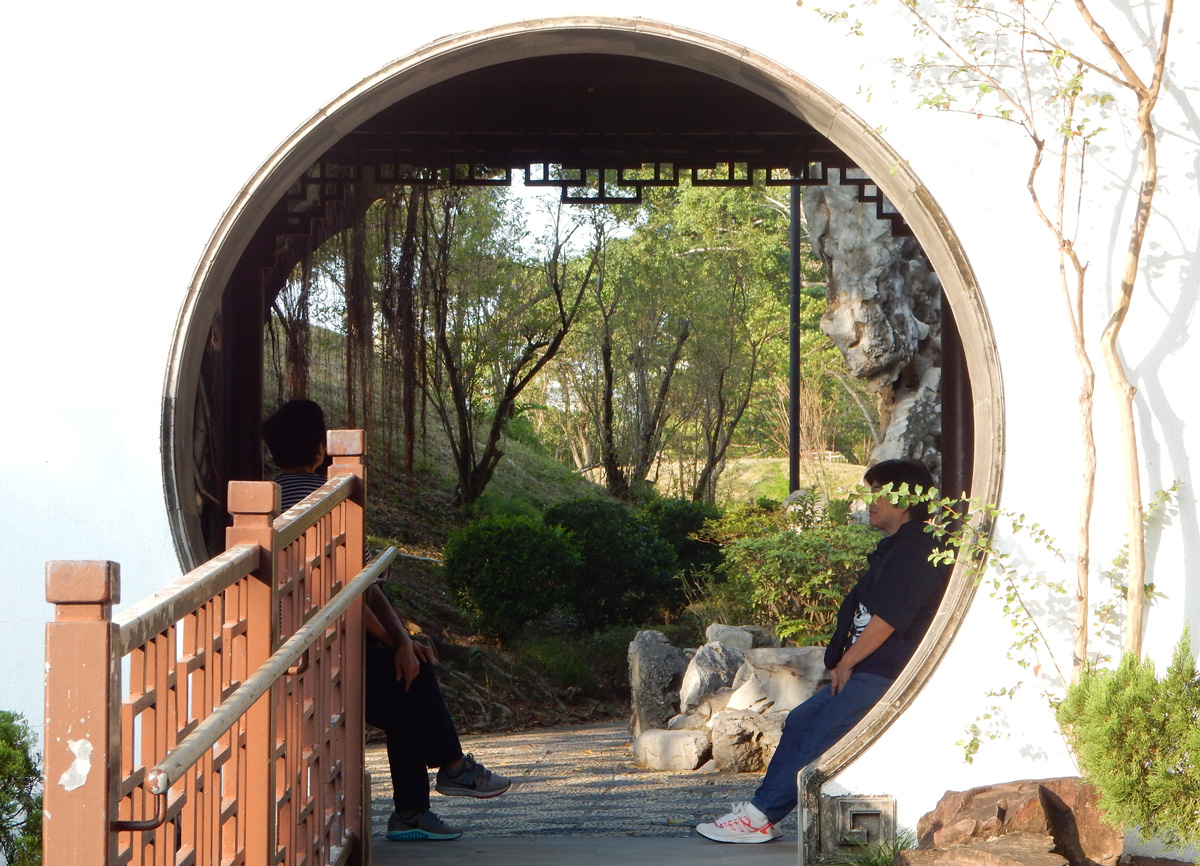 |
|||
| In January 1987, the Hong Kong Municipal Government had plans to demolish the Walled City, but it took quite an effort to evict the 50,000 residents and rehouse them elsewhere.
The demolition work started in 1993 and was completed a year later. In 1995, the whole site was transformed into the Kowloon Walled City Park. It has been suggested that the Govenment in Beijing was happy for the British Colonial Government to do the evicitons and the demolition, and to take all the flack. |
|||
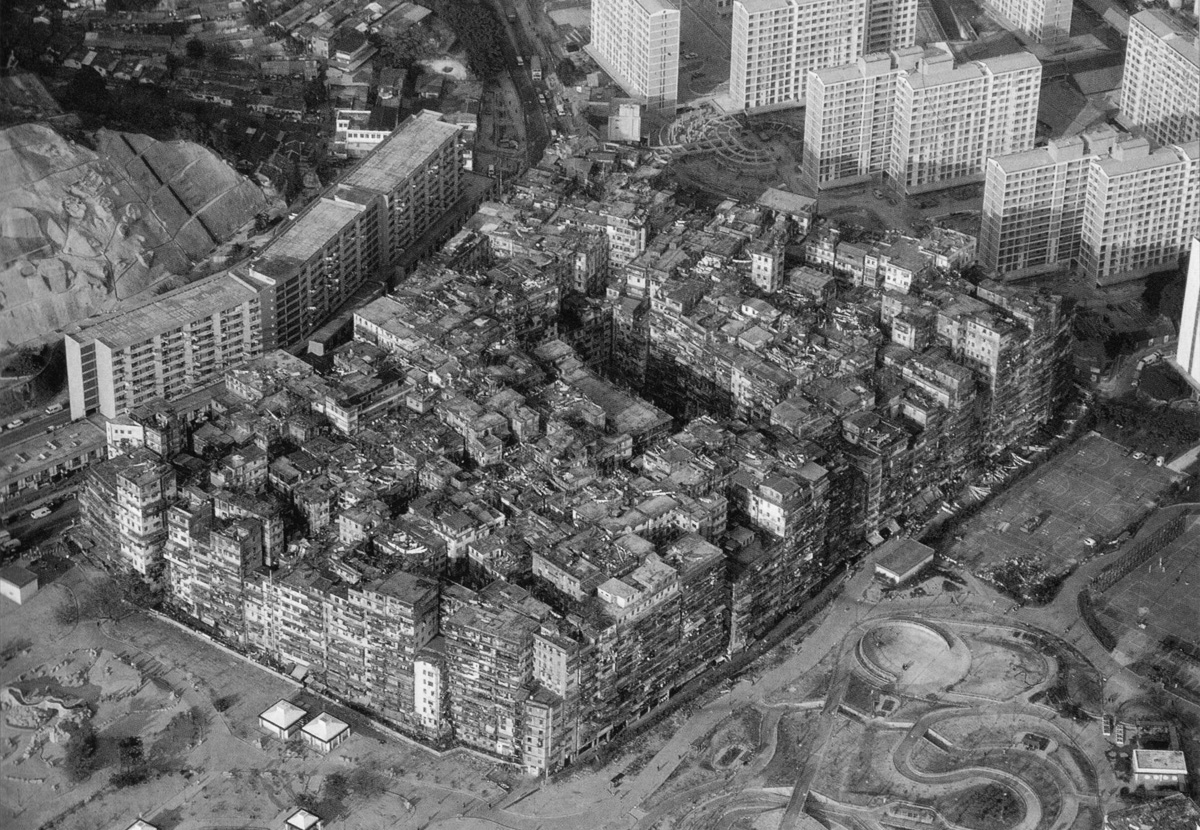 |
|||
| This is an aerial photo of the old Kowloon Walled City, shortly before it was demolished. | |||
 |
|||
| This brick building, which was in the very centre of the old site, is just about all that remains of the original Walled City. Amazingly it survived the anarchic rebuilding frenzy of the post-war era. Those cannons may have been relics from the time when it was a proper Chinese fort. | |||
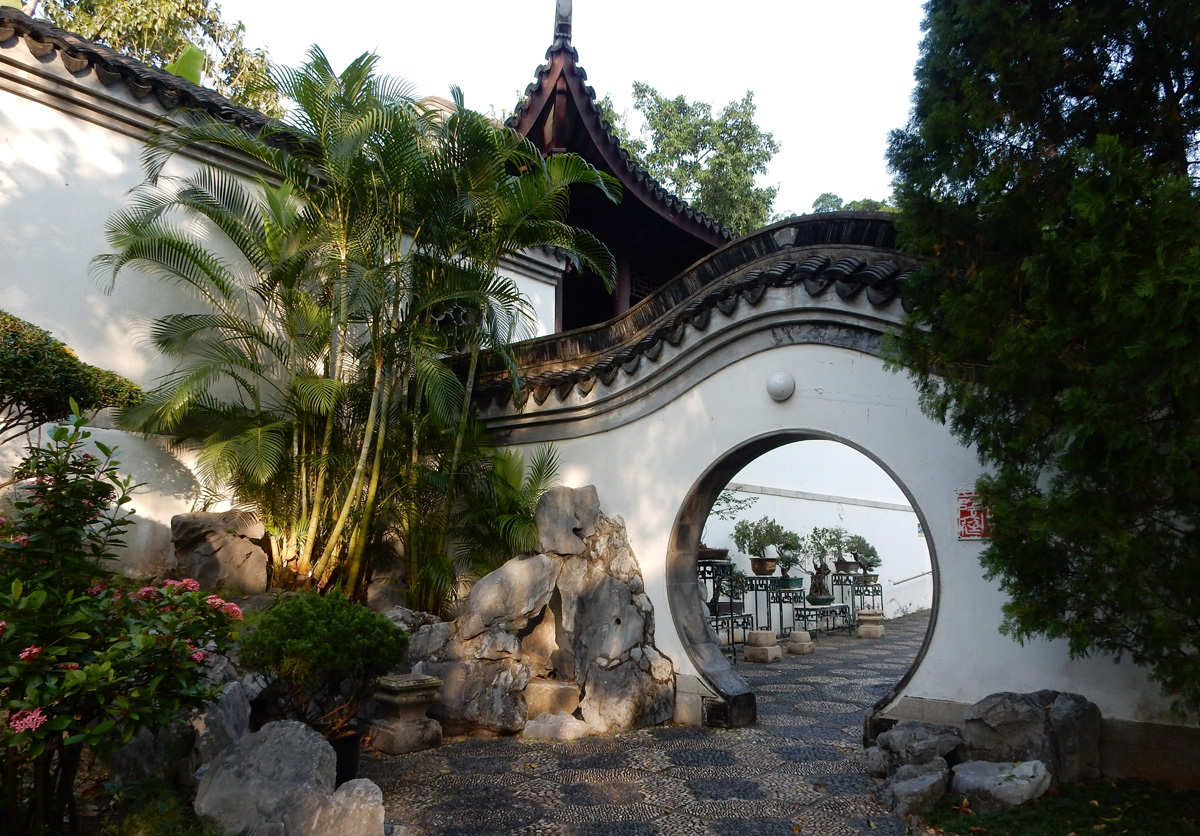 |
|||
| I think that the new Kowloon Walled CIty Park works very well, and it is certainly popular with both the locals and the tourists. | |||
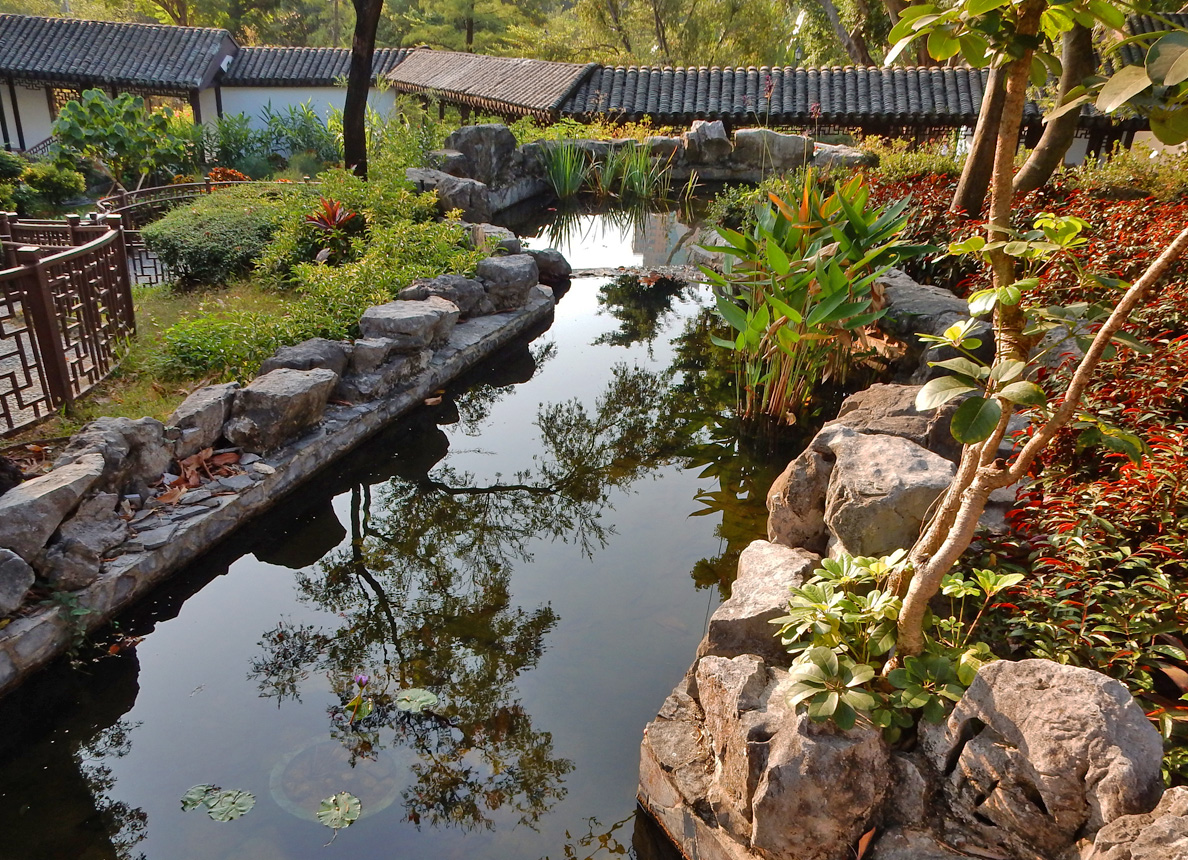 |
|||
| The next few photos show aspects of the Park. | |||
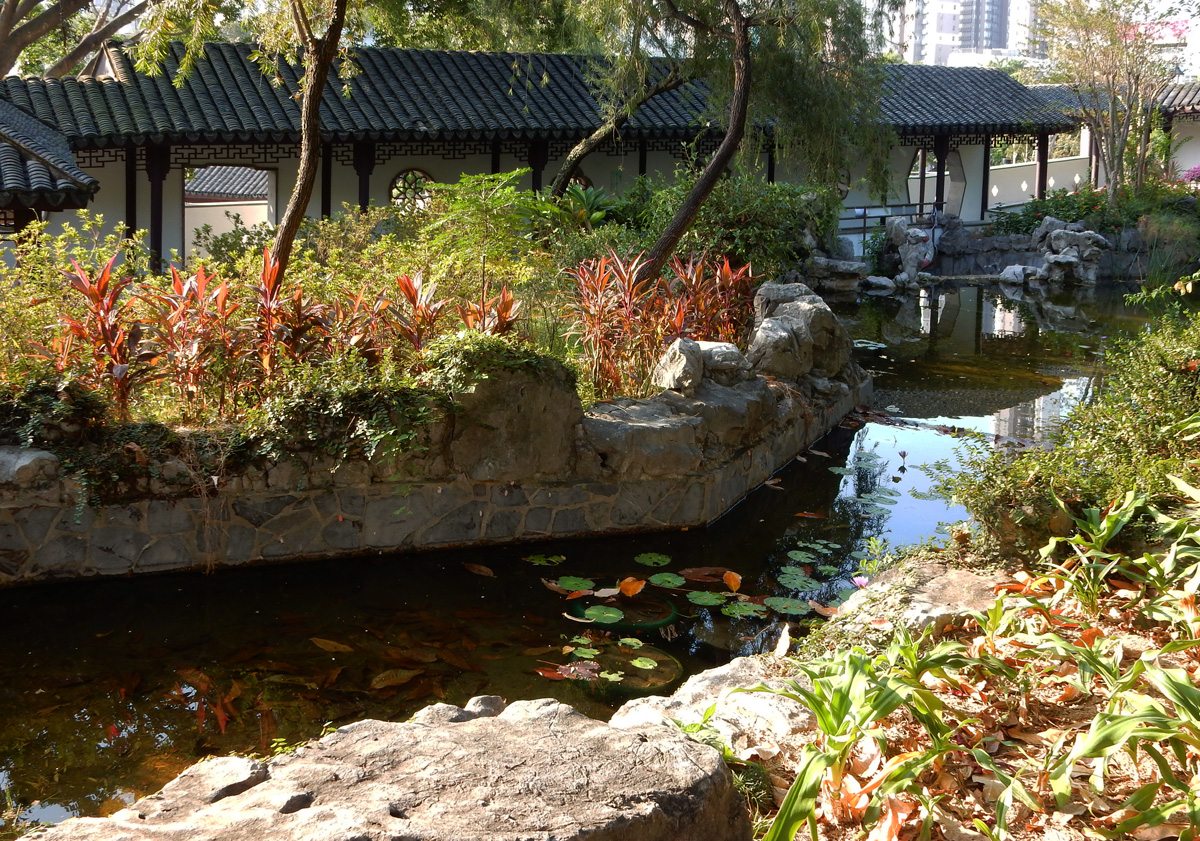 |
||
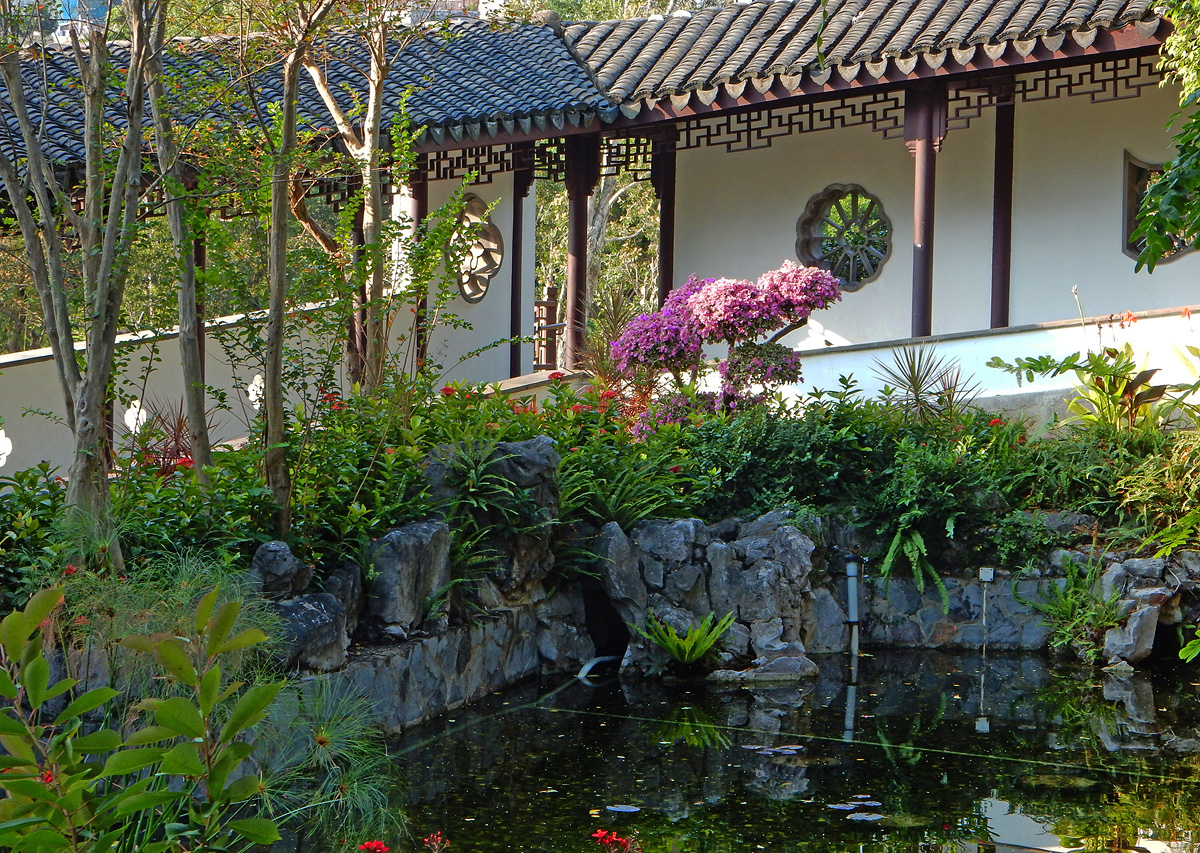 |
||
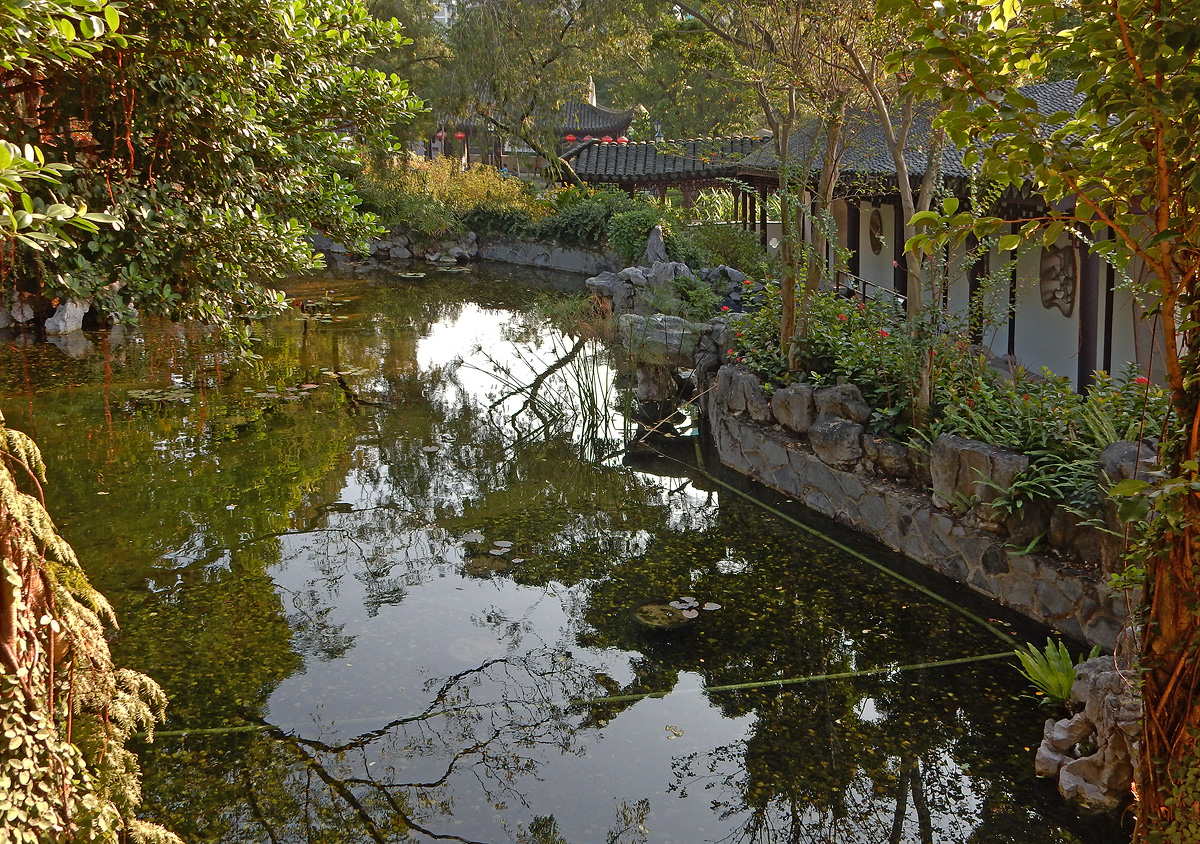 |
||
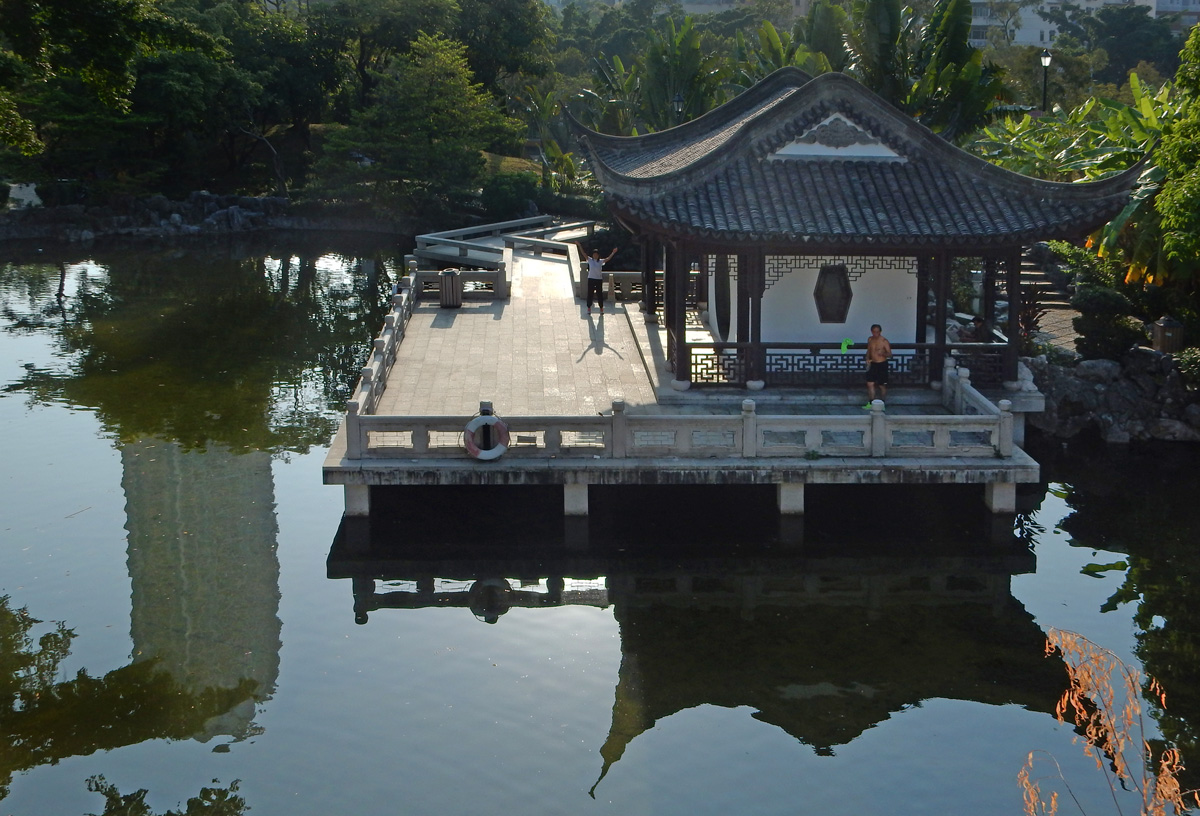 |
||
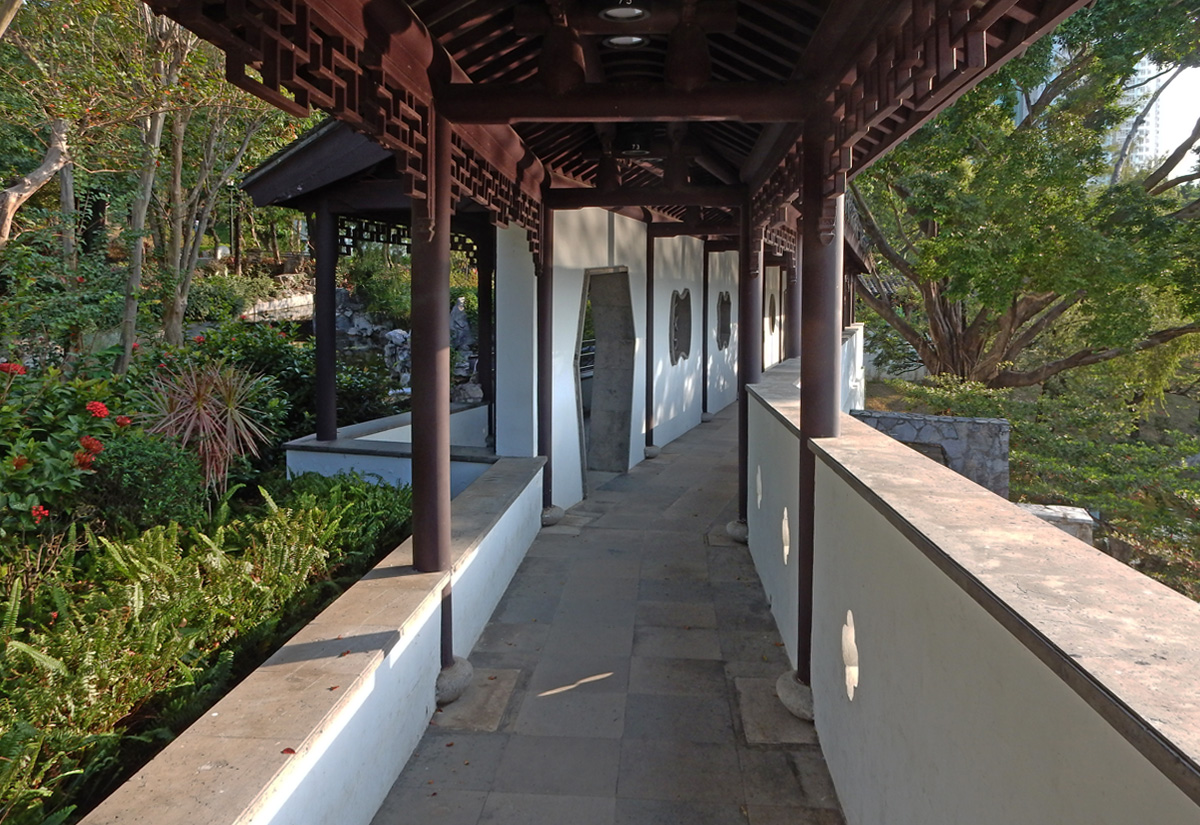 |
||
 |
||
 |
||
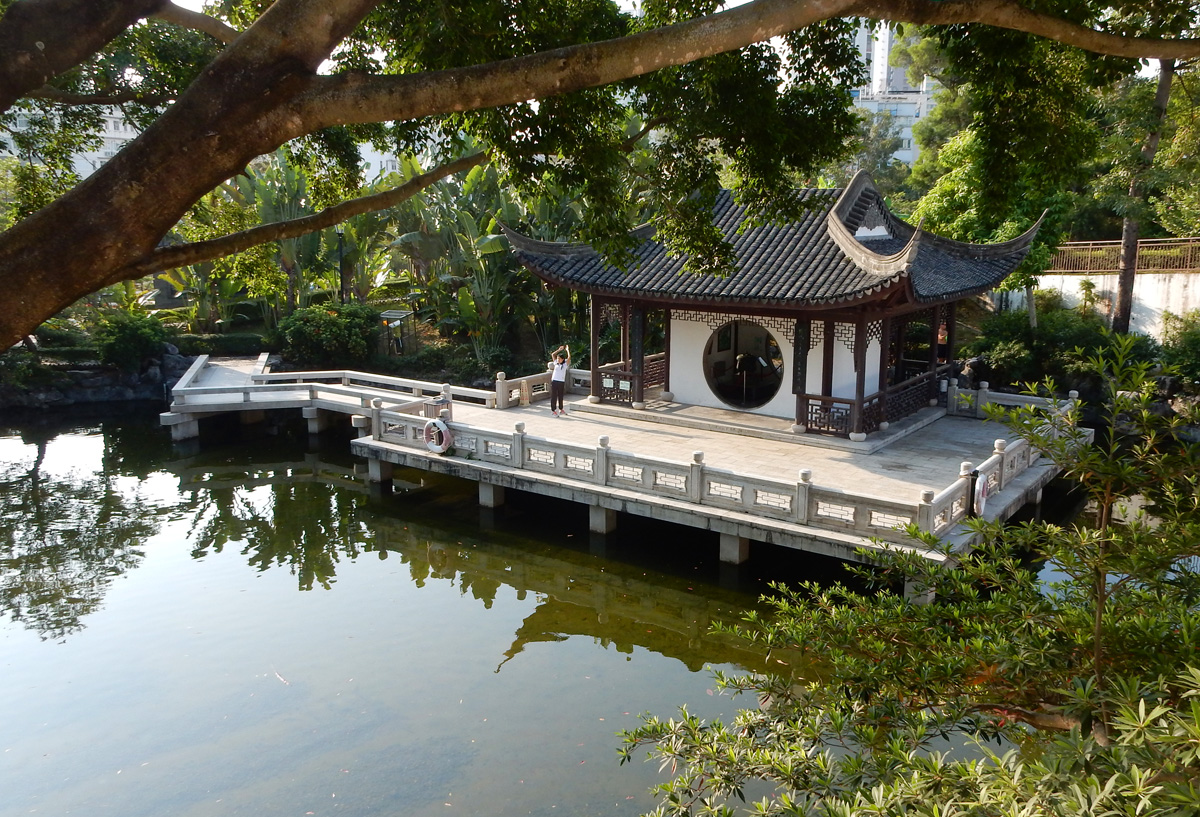 |
||
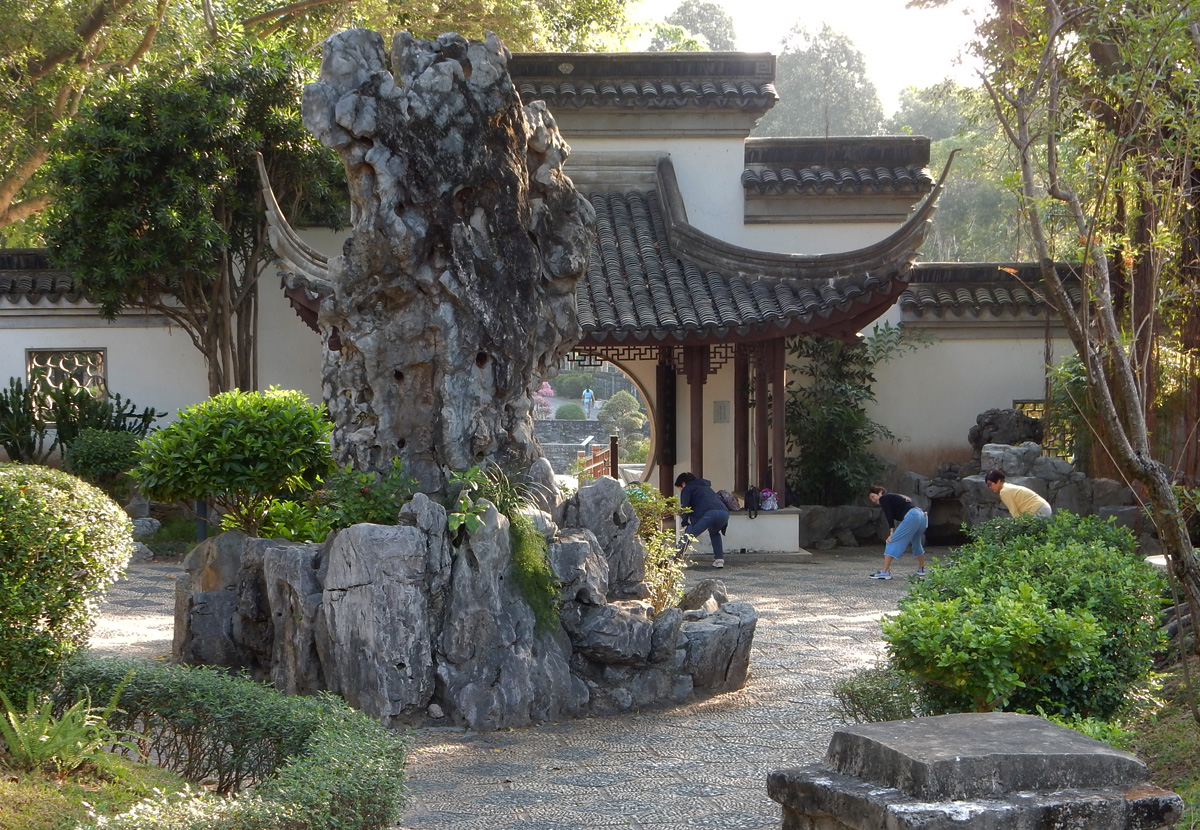 |
|||
| We say farewell to the ladies doing their exercises in the Kowloon Walled City Park. | |||
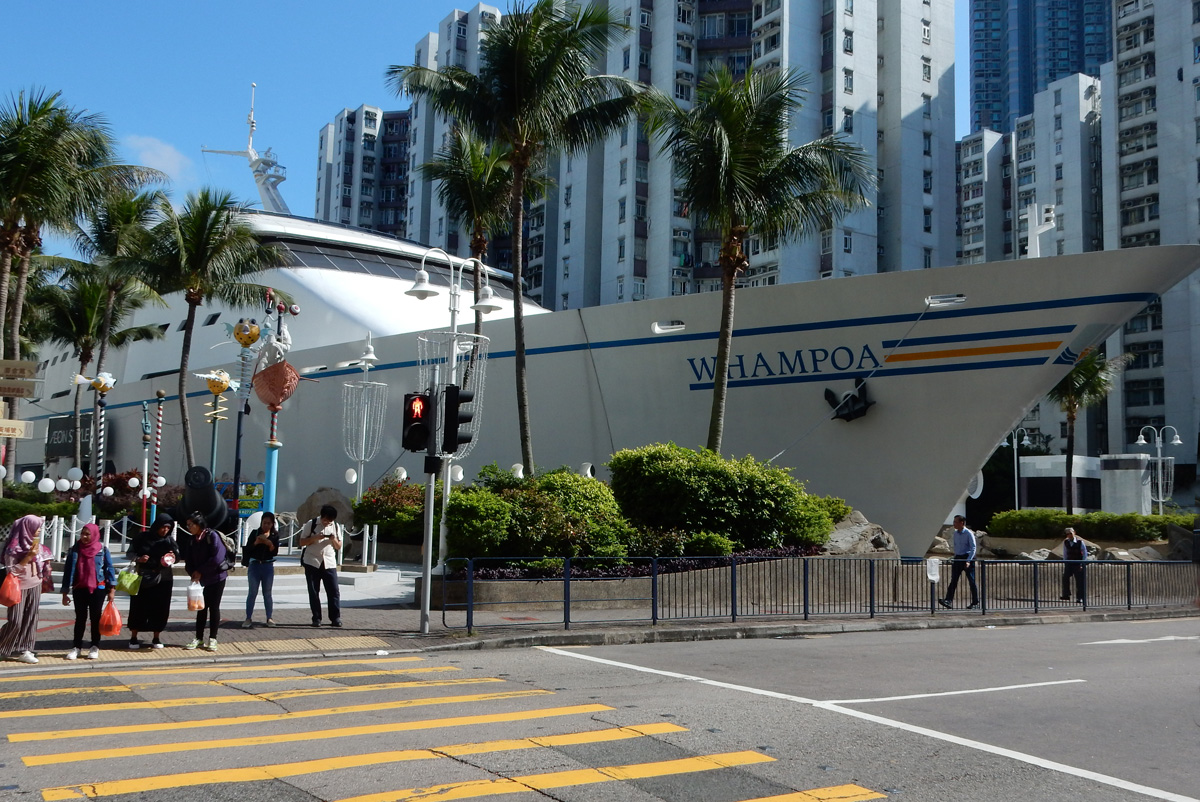 |
|||
| What appears to be a ship stranded on dry land is, in fact, a shopping mall. Whanpoa was the district on the shores of Kowloon where there were extensive ship-building yards.
This "maritime" shopping mall is actually on land that was reclaimed from Hung Hom Bay. |
|||
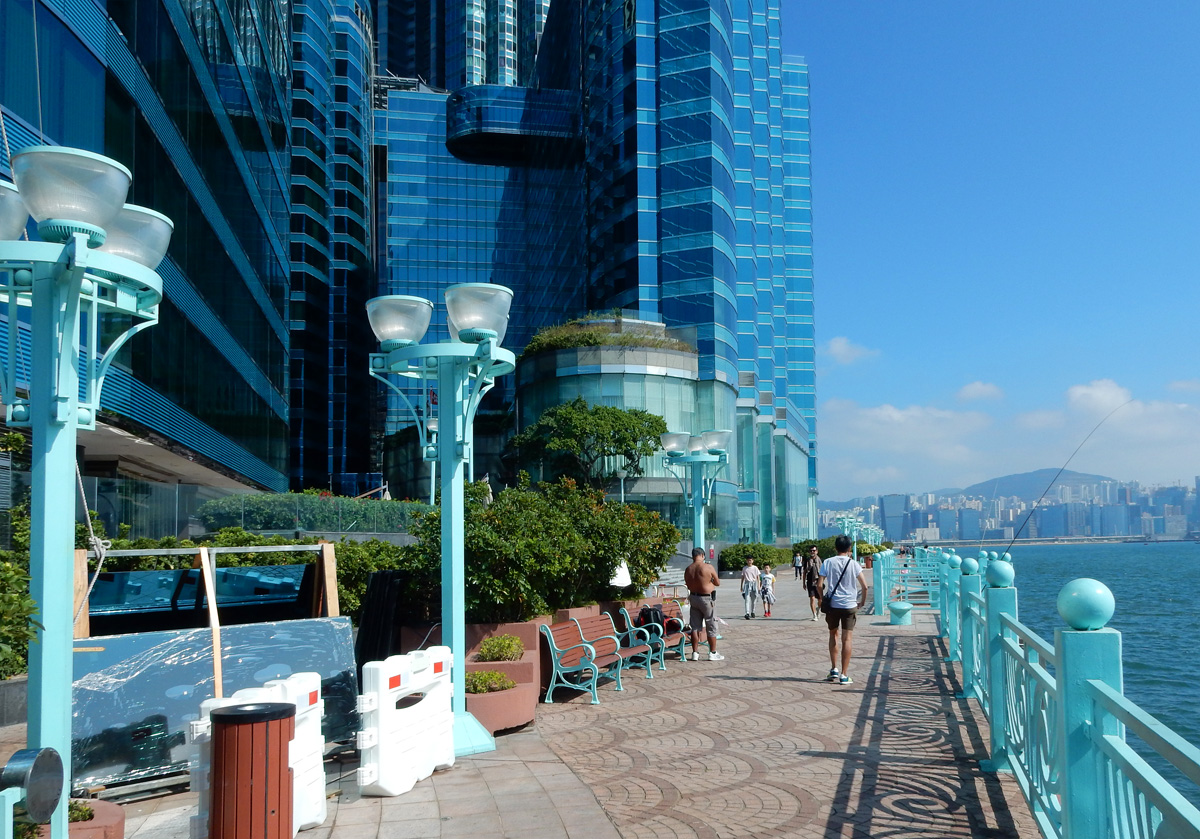 |
|||
| There is now a long stretch of harbourside promenade completed which allows pedestrians to walk from the Laguna Mall in Kowloon Bay all the way to the Star Ferry Wharf in Tsim Sha Tsui. It is well worth the effort for the great views of Hong Kong Harbour. | |||
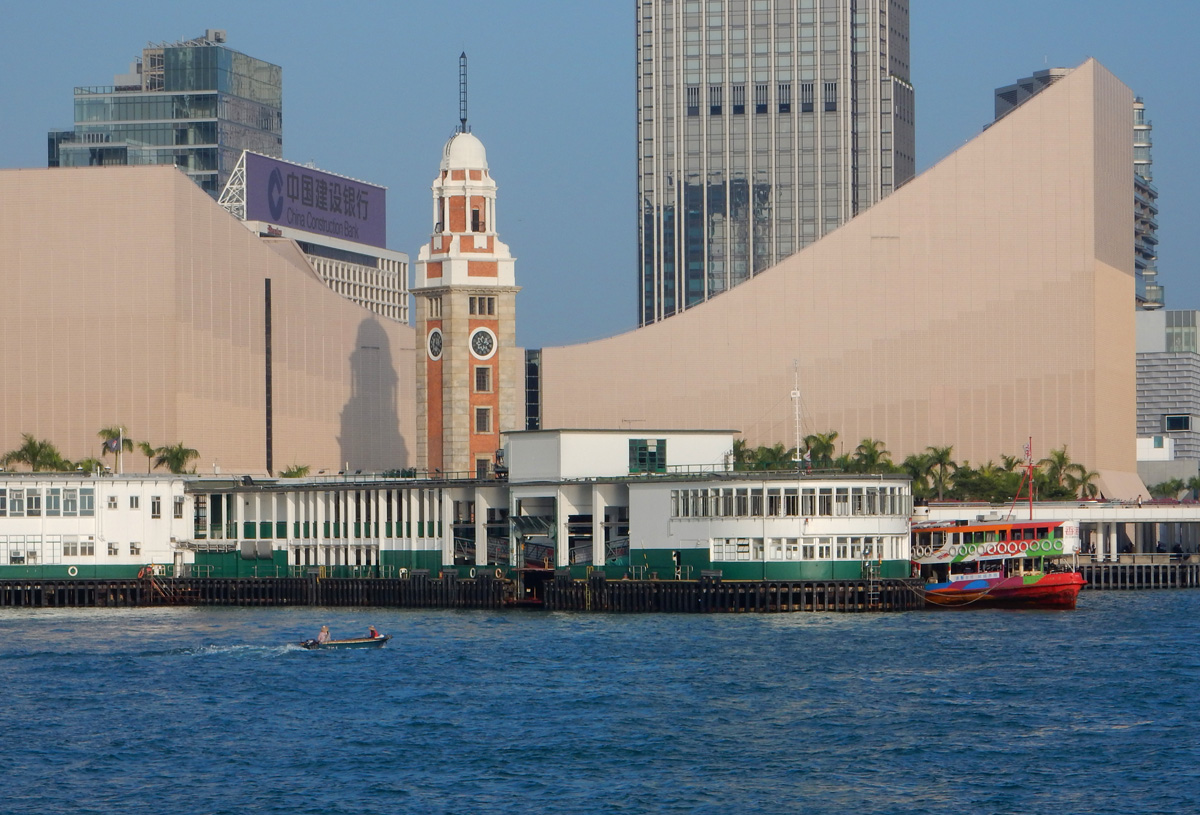 |
||
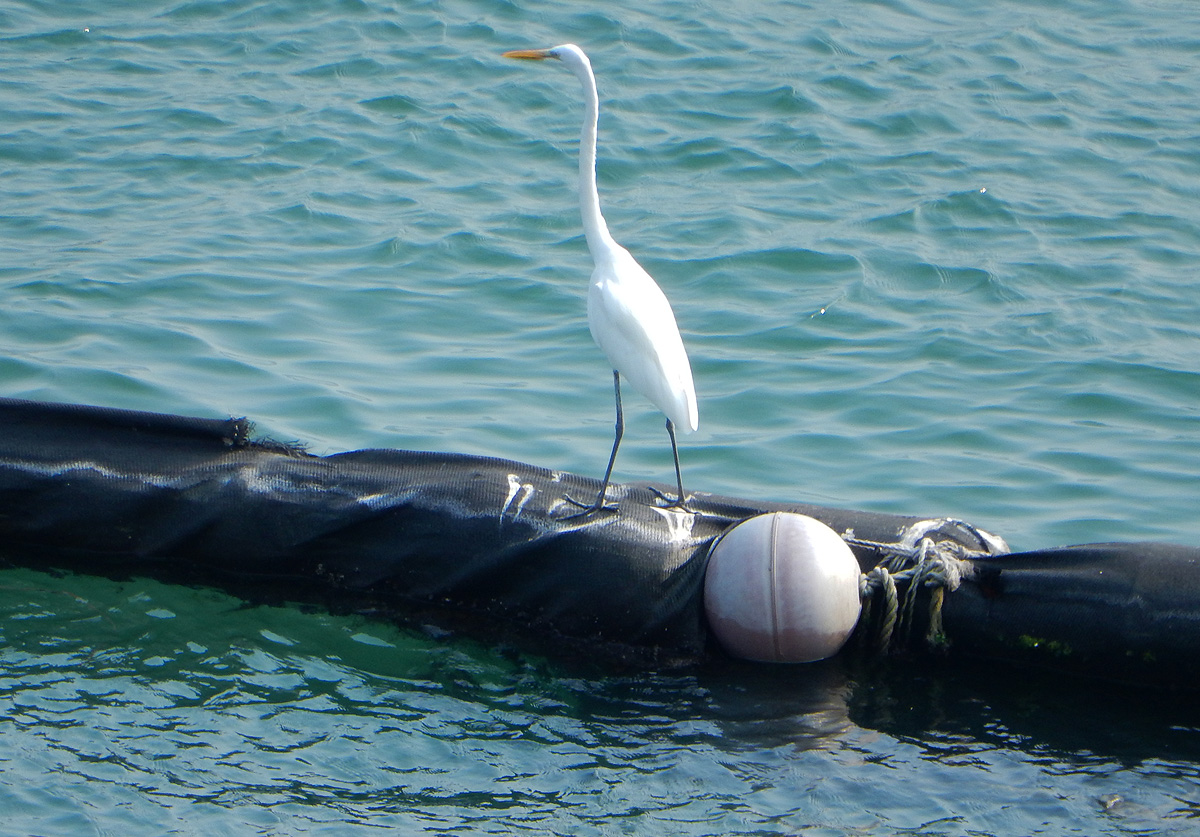 |
|||
| Along the way, one sees the local wildlife sitting on nets designed to catch storm gutter waste from entering the harbour. | |||
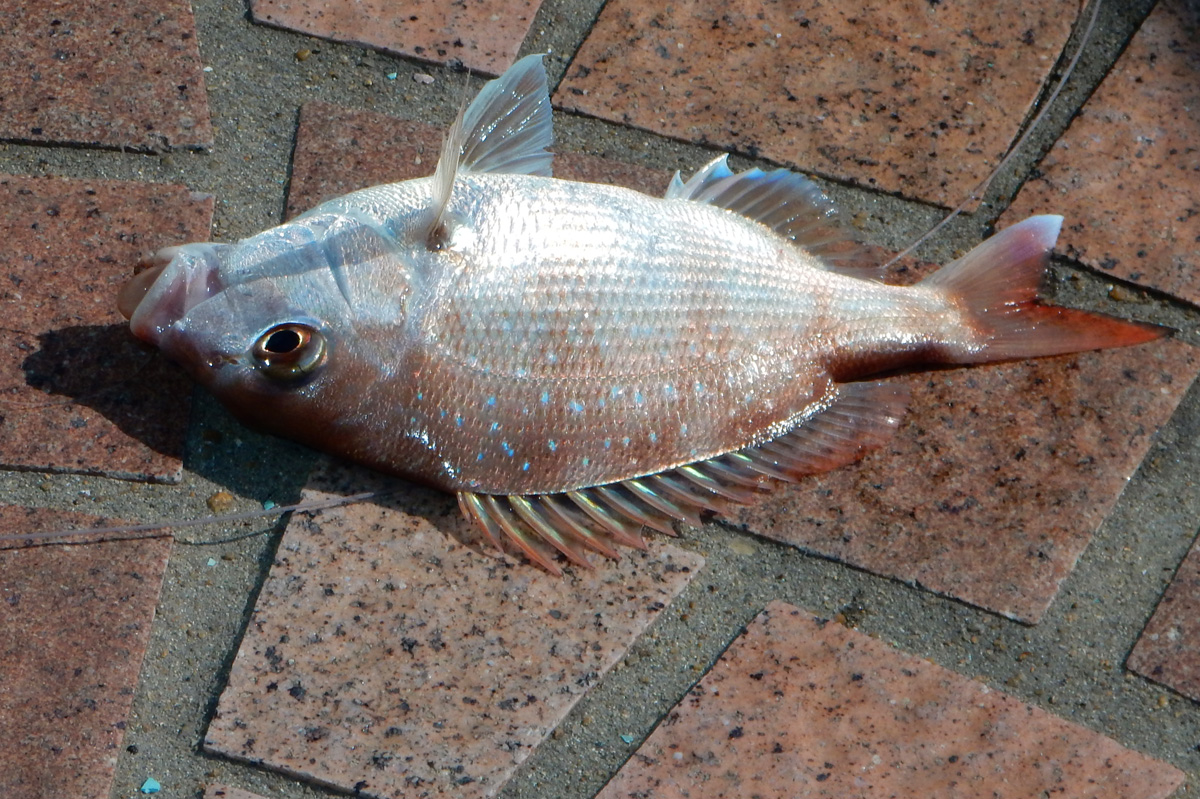 |
|||
| The locals are keen fishermen. This is one of their catches. | |||
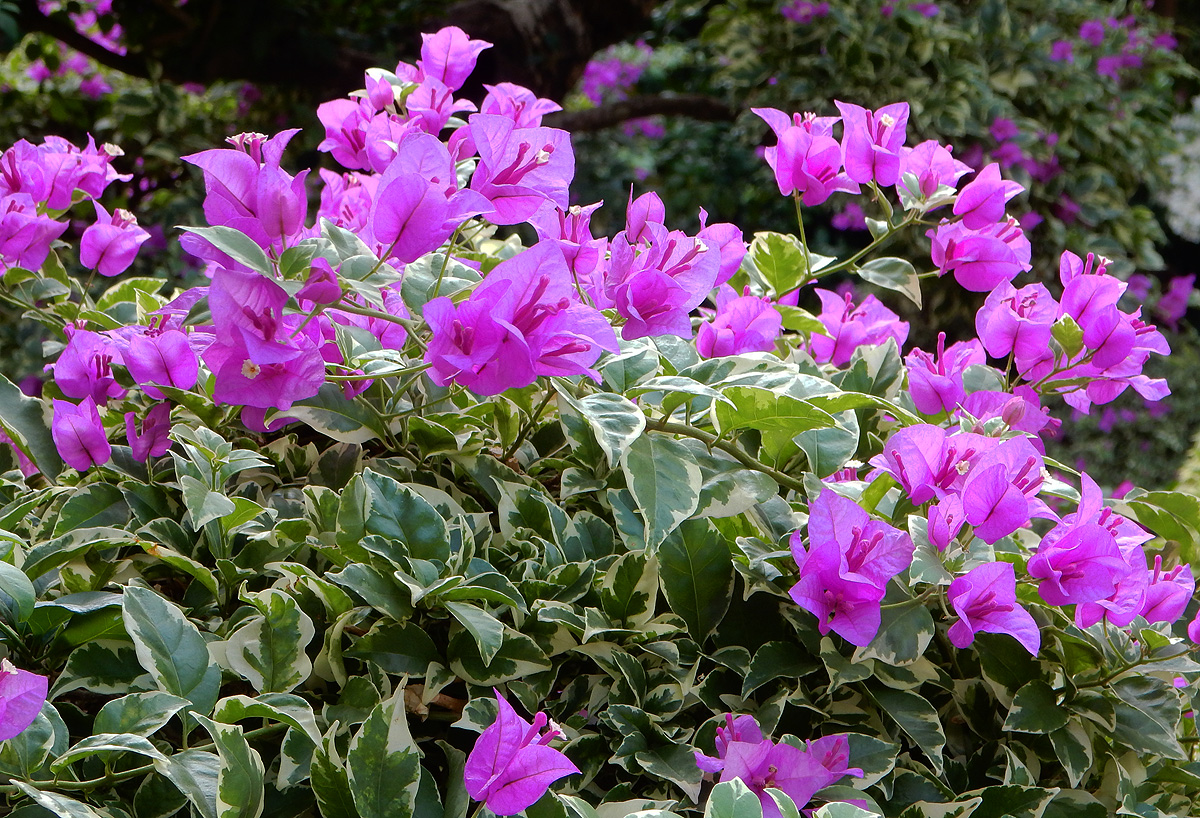 |
||
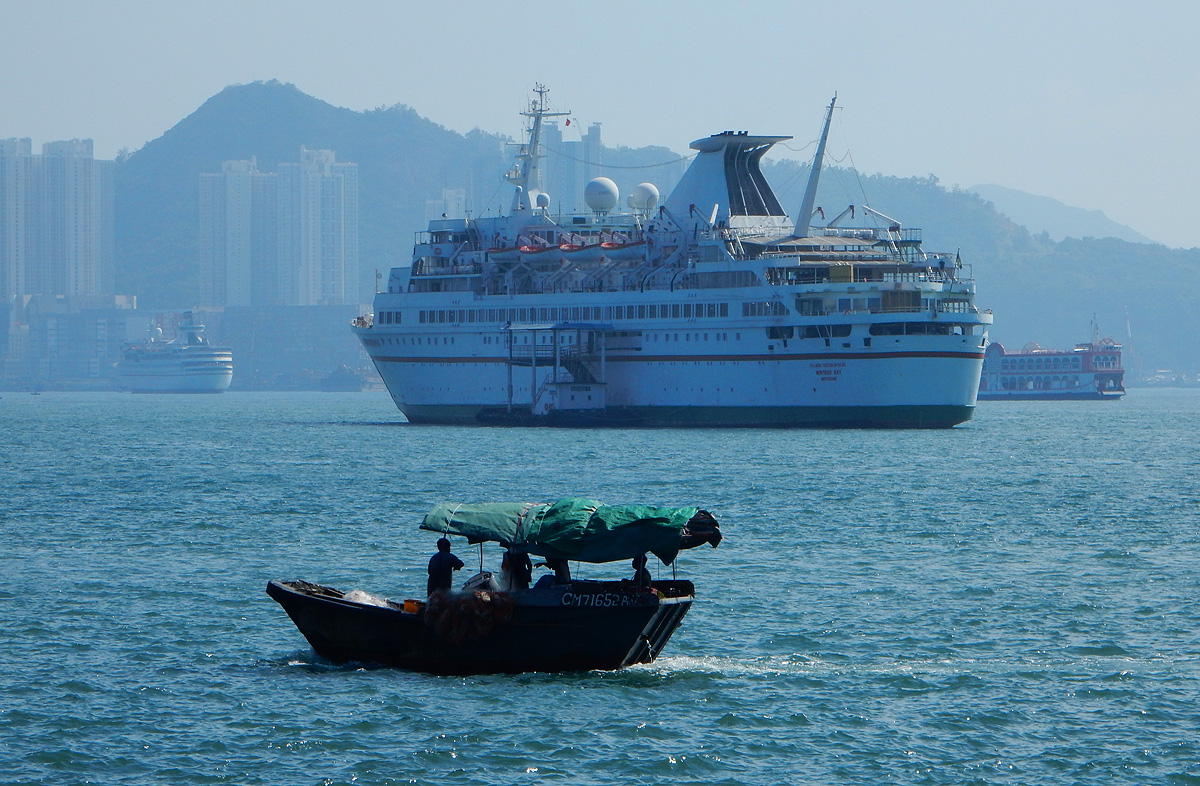 |
|||
| Some of the Cruise Ships anchor out in the harbour. | |||
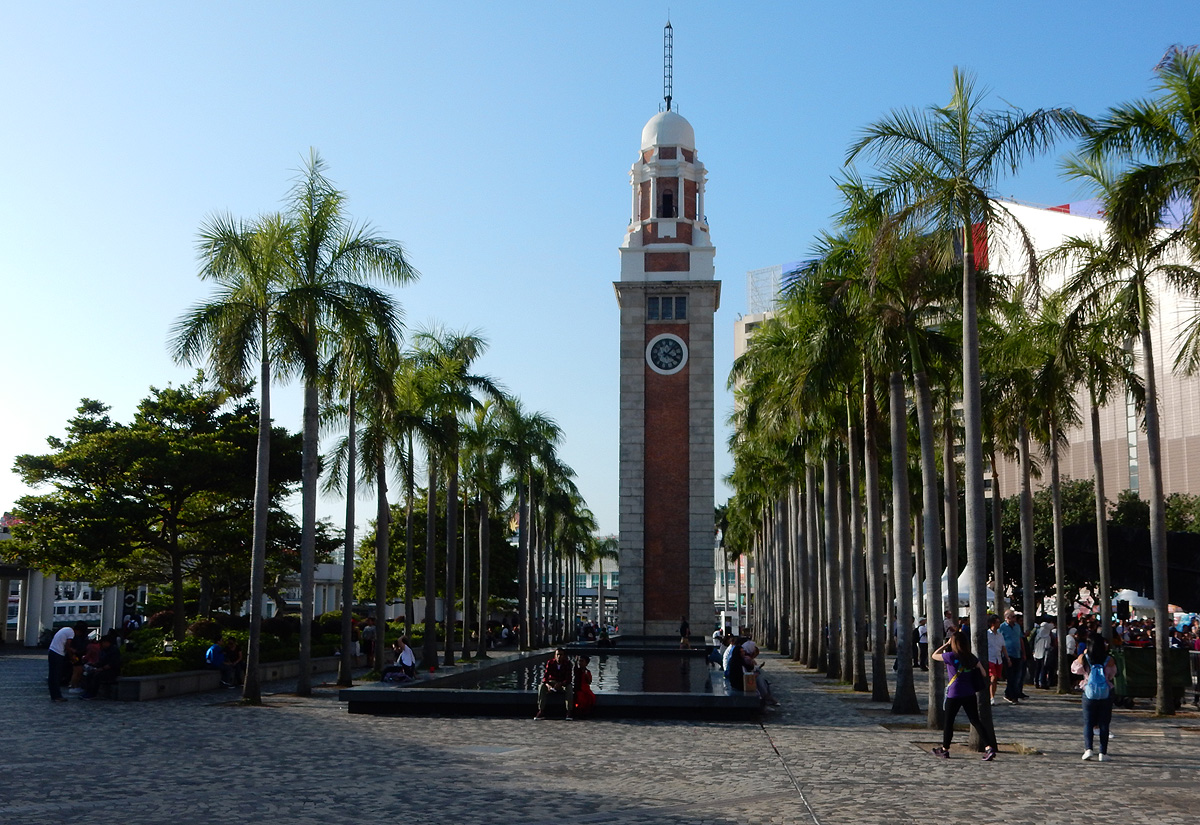 |
|||
| This lovely clock tower is all that remains of the railway station from which steam trains would depart for the Chinese border at Lo Wu. | |||
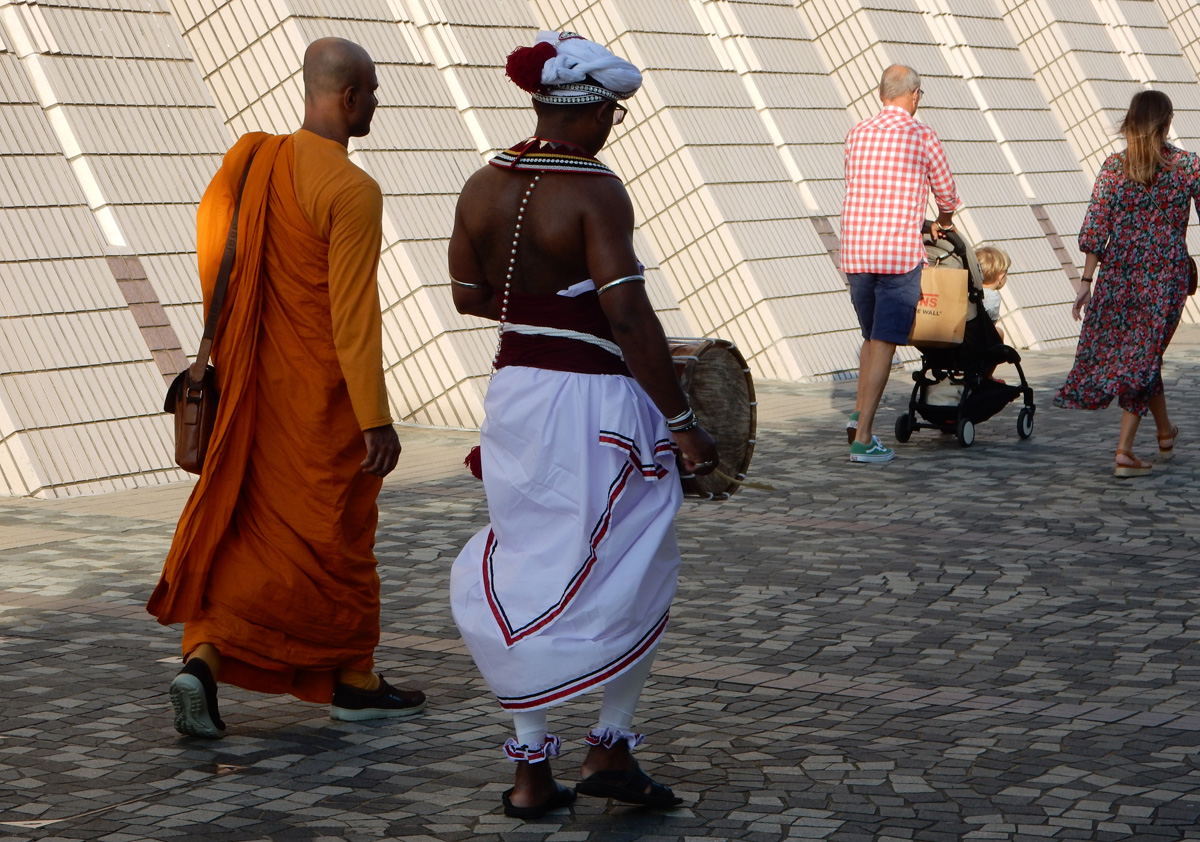 |
|||
| I noticed exotically dressed people gathering near the old Clock Tower. They were participants in the Asian Ethnic Cultural Fetival taking place in Kowloon. | |||
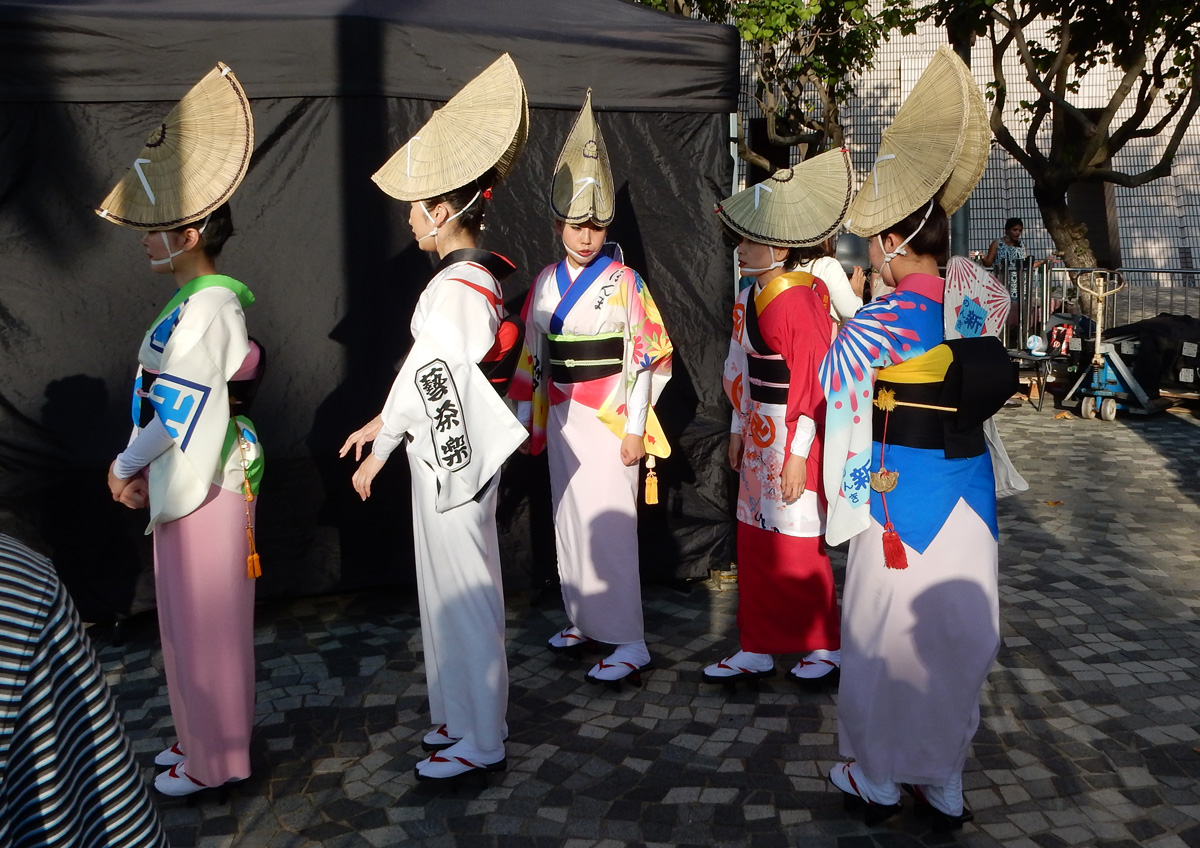 |
||
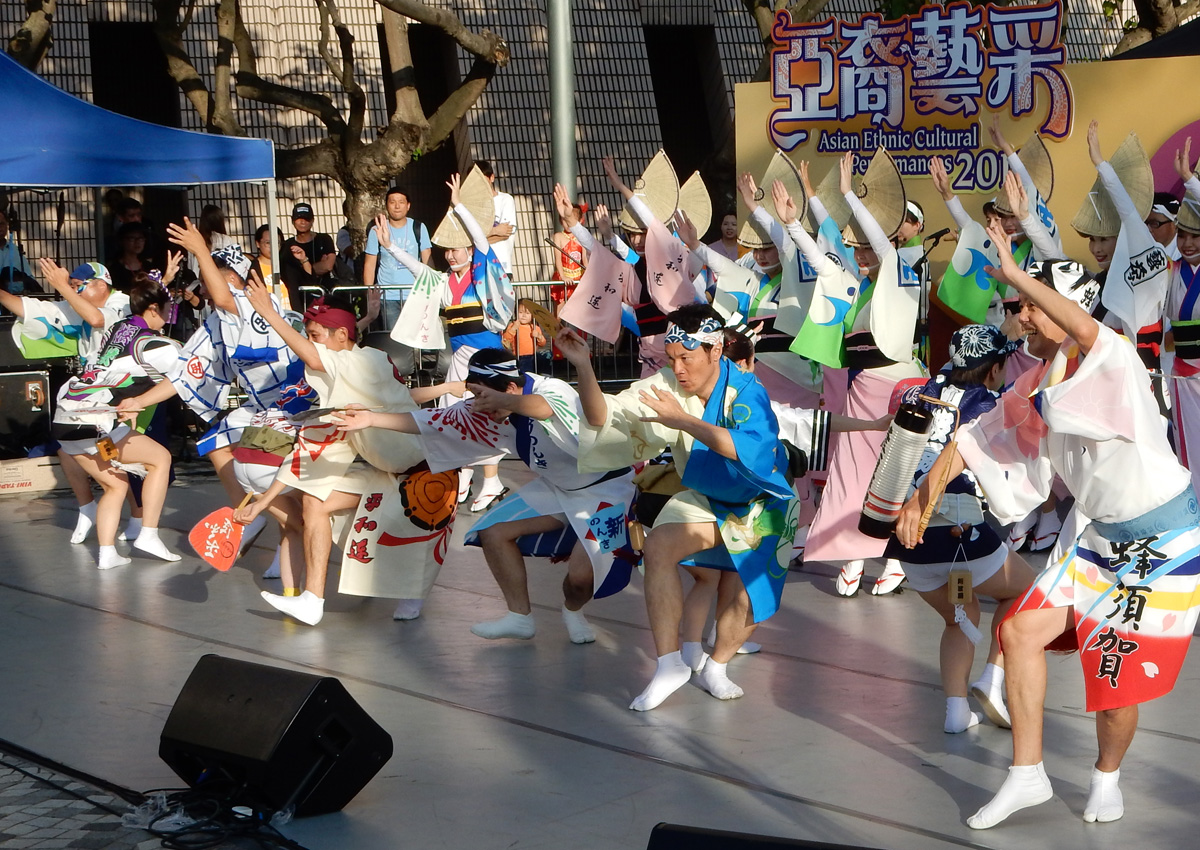 |
||
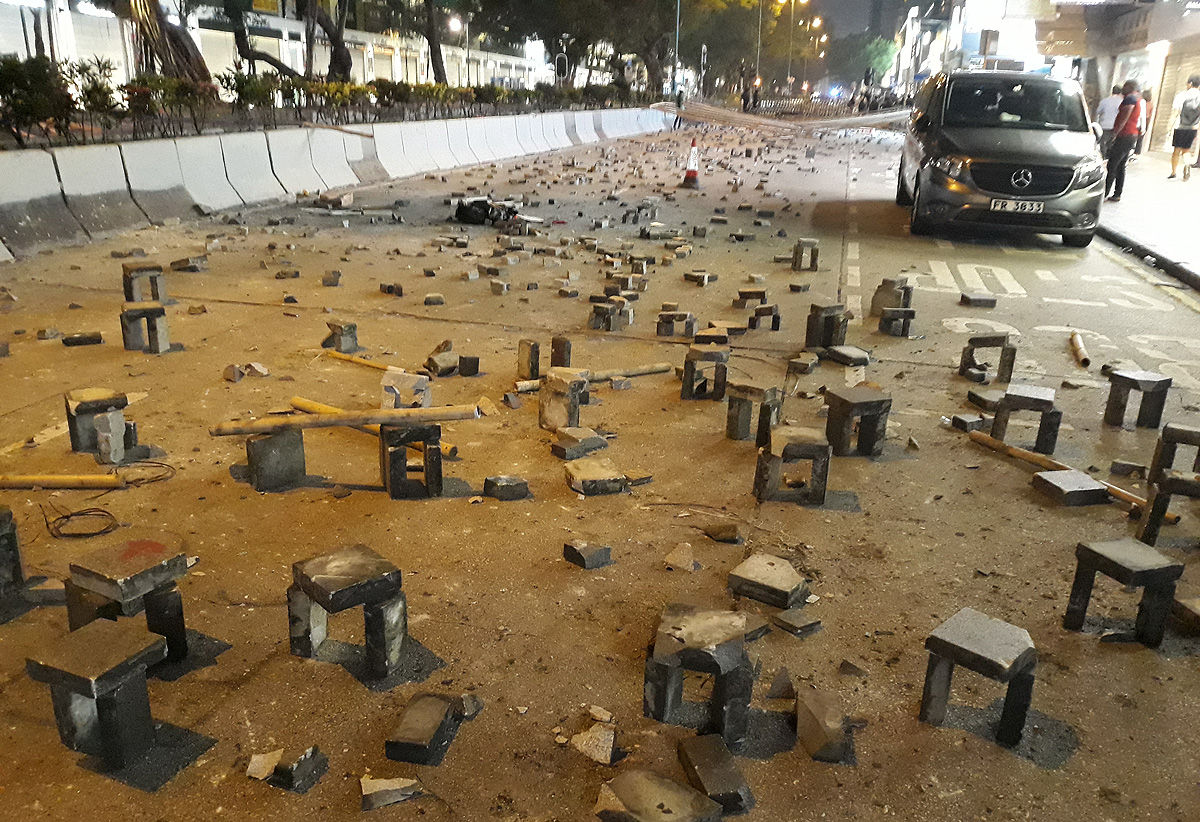 |
|||
| Alas, we can't finish this trip in Kowloon without mentioning the "Troubles". I managed to avoid the worst conflict zones when I was there in November, 2019, but, one night, trouble came to me. This was the scene on Nathan Road, almost outside the entrance to my guesthouse.
I was impressed at how quickly all the debris was removed, and traffic was allowed to flow through again. Hong Kong is always resilient! |
|||
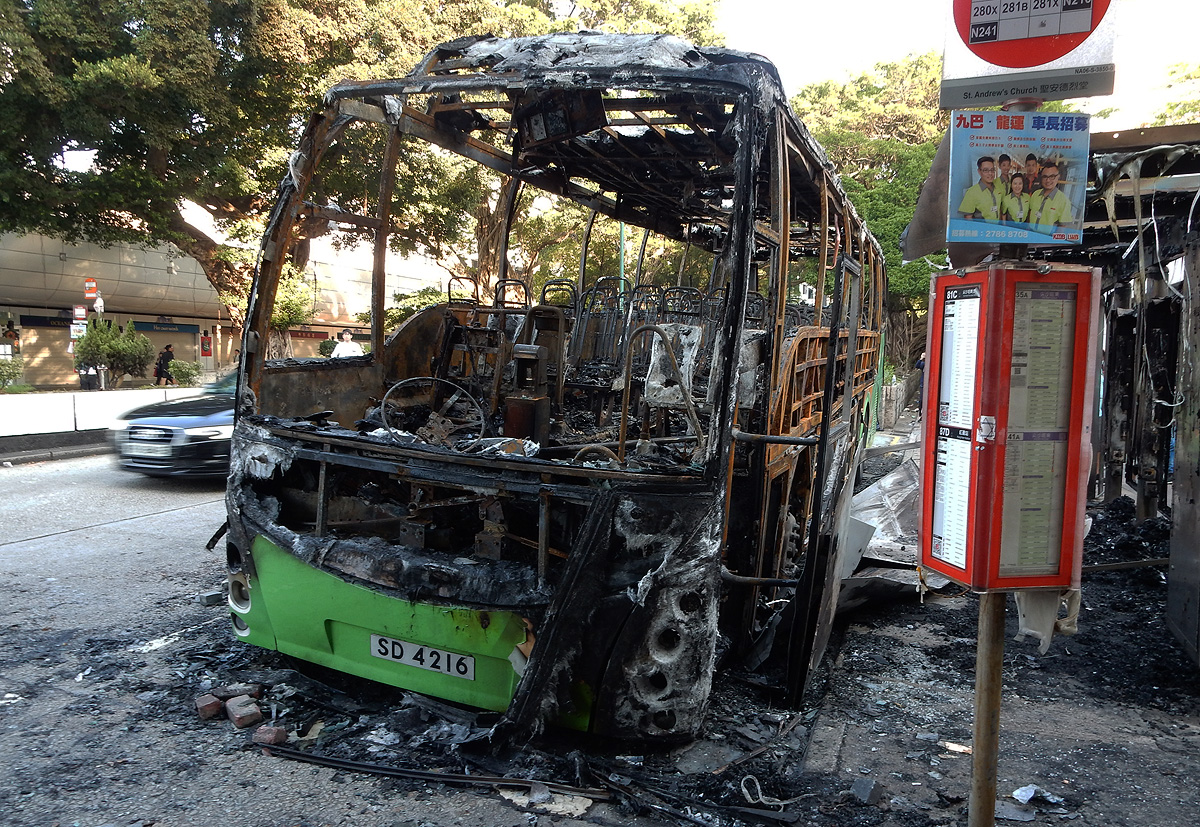 |
|||
| This burnt-out bus was about 100 metres from my guesthouse.
Please don't let these last two gruesome images spoil your vision of Hong Kong. I had a great time visiting over two weeks, and found that I could easily avoid the conflict zones. Paradoxically, now could be a good time to visit Hong Kong, as I am told that the hotels are offering big discounts. Quick! Grab a deal! That is the Hong Kong Spirit! |
|||
|
To return to the Paintings section of this website, please CLICK HERE
|
|||